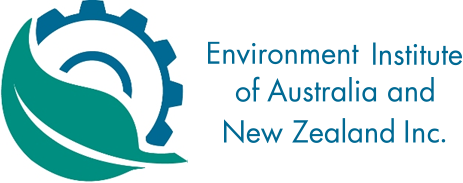-
Member Login
- Home
- About
- Institute Groups
- Membership
- Events
- News & Publications
- Institute Programs
- Resources
- Jobs Board
- Contact Us
- Site Info
AJEM Editor's tip: Finding academic literature
We know many EIANZ members have worthwhile knowledge to publish, but can struggle with writing for journal rather than report style. The Editors' Tips at the end of the March and June 2016 editorials are designed to guide those wishing to write for this or other journals.
This exclusive addition to the editors’ tips is designed to help those who may not have access to a library.
Expectation
All journals expect you to include a literature, of refereed literature. Refereed literature has been through a peer review process by experts in the field and is validated as suitable for publication. Formally published journal articles, books and book chapters are usually refereed. Very few reports, and no websites, are refereed, and so are not deemed scientifically trustworthy. Generally the home page of the journal will indicate that it is refereed.
The key purposes are to sum up for your reader what was known so far in the field, show that you have ‘done your homework’ and know what is known so far in this field, show that you have identified a gap in existing knowledge that should be filled, and acknowledge predecessors whose work you intend adding to.
Searching literature
If you have access to a good library that subscribes to databases such as Web of Science, your task is easy. Ask the librarians or learn how to do a database search using logical keywords for your field. So long as you choose the appropriate databases and keywords, you will find the key journal articles in your field. You may or may not find the books and book chapters, since book publishers do not fully participate in this system. Many EIANZ members will not have such good libraries though. In that case, a simple method – though not so academically reliable – is to use Google Scholar. Find that website, and start searching by keywords. You may also search for authors who you know to be active on that topic. When you have shortlisted the works to consider, check that they are refereed.
If you have 2000 hits on your first try, narrow down the keywords to more specific ones, or try ‘and’ and ‘or’ combinations (e.g. public participation and community engagement will identify documents that comment on both; public participation or community engagement will identify a wider field, using either term).
Some of the works will be publicly accessible for free. Others you may need to pay for, so check whether you have routes to free access, or check the sites Academia.com or Research Gate, where authors can post pre-publication versions for free. If you know the university an author works with, you may also find a copy via their site (some in Australia are called e-space).
Presenting literature
Look at published articles to get the sense of what is required, and how to present it. Many authors will review at two levels, (a) what is generally known, worldwide, and (b) what is very specifically known about their narrower topic and/or place of study. If very little has been done on your specific topic, review the works close to it, and the wider field. Editors and reviewers are never convinced by arguments that ‘there isn’t any literature’. Look out for ‘review’ articles, that provide useful literature reviews on what is known up to their publication date.
Try to concentrate on the most recent literature (about half of your citations should be from the last five years), while also acknowledging the classics in the field, and people whose ideas you have used. Look at journal articles for the style of in-text citation. The author-date citations to articles usually go at the end of a sentence, but if only half of a sentence draws on that citation, put the citation with that point. Here is an example from Wu et al. (2016), in our June issue:
While there are theories of institutional change (North 1971; Weyland 2006) that may address some aspects of these issues, the challenge is more fundamental and goes to the roots of our democratic system and the values of the community in relation to water supply institutions. This article focuses on the latter.
This sentence shows that everything after the brackets is the authors’ own thinking, not points made by North 1971 or Weyland 2006.
Reference
Wu, Z, Keremane G & and Jennifer McKay’ J 2016 in press, Sustainable urban water management through the lens of community – a Photostory exercise in metropolitan Adelaide’, Australasian Journal of Environmental Management, vol. 23, no. 2, http://dx.doi.org/10.1080/14486563.2015.1084488.
We acknowledge and value the rights and interests of Indigenous Peoples in the protection and management of environmental values through their involvement in decisions and processes, and the application of traditional Indigenous knowledge.

